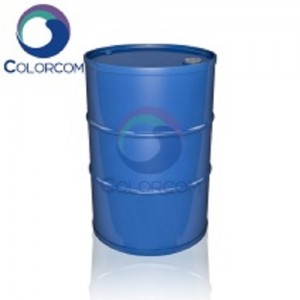sec-Butyl Acetate | 105-46-4
Product Physical Data:
| Product Name |
sec-Butyl Acetate |
| Properties |
Colorless liquid with a fruity odor |
| Melting Point(°C) |
-98.9 |
| Boiling Point(°C) |
112.3 |
| Relative density (Water=1) |
0.86 |
| Relative vapour density (air=1) |
4.00 |
| Saturated vapour pressure (kPa)(25°C) |
1.33 |
| Heat of combustion (kJ/mol) |
-3556.3 |
| Critical temperature (°C) |
288 |
| Critical pressure (MPa) |
3.24 |
| Octanol/water partition coefficient |
1.72 |
| Flash point (°C) |
31 |
| Ignition temperature (°C) |
421 |
| Upper explosion limit (%) |
9.8 |
| Lower explosion limit (%) |
1.7 |
| Solubility | Insoluble in water, miscible in most organic solvents such as ethanol, ether, etc.. |
Product Properties:
1.Similar to butyl acetate. Decomposes to 1-butene, 2-butene, ethylene and propylene when heated to 500 °C. When sec-butyl acetate is passed through glass wool in a stream of nitrogen at 460 to 473°C, 56% 1-butene, 43% 2-butene and 1% propylene are produced. When heated to 380°C in the presence of thorium oxide, it decomposes into hydrogen, carbon dioxide, butene, sec-butanol and acetone. The rate of hydrolysis of sec-butyl acetate is small. When ammonolysis occurs in dilute alcoholic solution at room temperature, 20% is converted to amide in 120 hours. It reacts with benzene in the presence of boron trifluoride to form sec-butylbenzene. When photo-chlorination is carried out, chlorobutyl acetate is formed. Among them, 1-methyl-2 chloropropyl acetate accounts for 66% and other isomers account for 34%.
2.Stability: Stable
3.Prohibited substances: Strong oxidants, strong acids, strong bases
4.Polymerisation hazard: Non-polymerisation
Product Application:
1.Mainly used in lacquer solvents, thinners, various vegetable oils and resin solvents. Also used in plastics and spice manufacturing. Gasoline antiknocking agent.
2.Used as solvents, chemical reagents, used in the preparation of spices
Product Storage Notes:
1.Store in a cool, ventilated warehouse.
2.Keep away from fire and heat source.
3.The storage temperature should not exceed 37°C.
4.Keep the container sealed.
5.It should be stored separately from oxidising agents, alkalis and acids, and should never be mixed.
6.Use explosion-proof lighting and ventilation facilities.
7.Prohibit the use of mechanical equipment and tools that are easy to generate sparks.
8.The storage area should be equipped with leakage emergency treatment equipment and suitable shelter materials.









